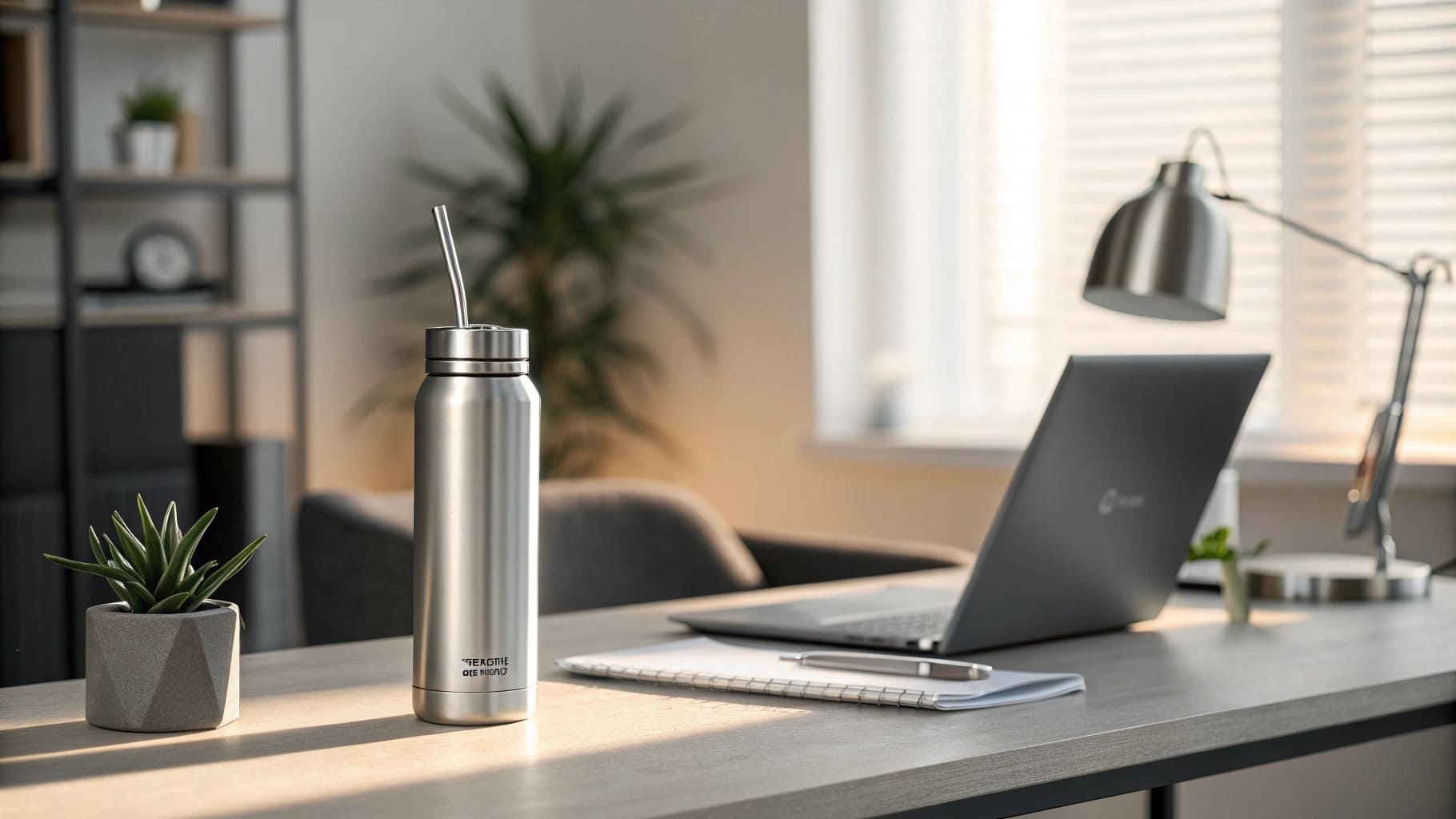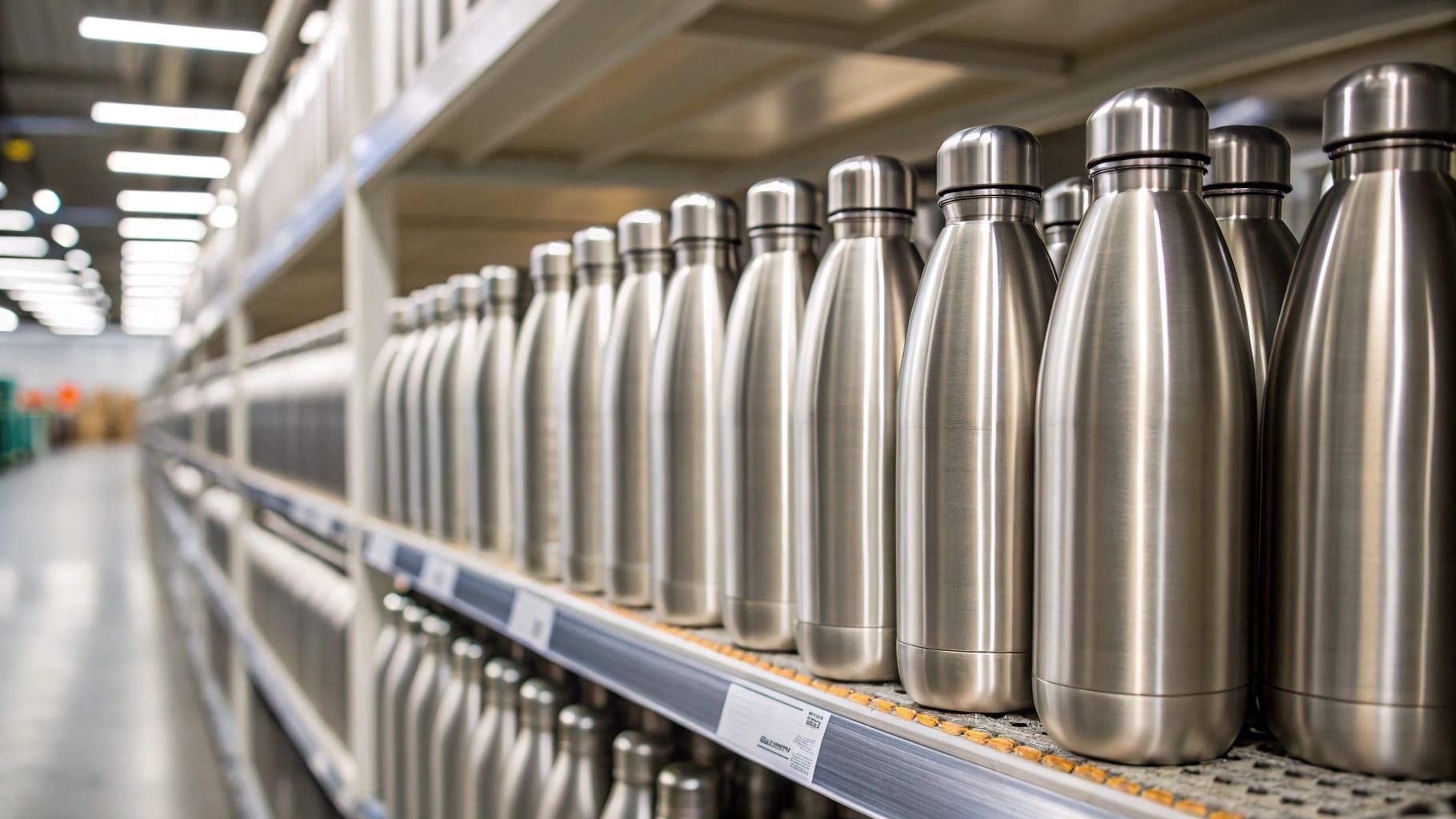Tired of flimsy bottles that don't last or leach chemicals? Wasting money on replacements or worrying about safety is frustrating. Discover which stainless steel truly offers durability.
The best durable stainless steel water bottles often use 304 (18/8) or 316 grade. For most uses, 304 offers excellent durability, safety, and value. 316 provides enhanced corrosion resistance for specific needs, making it a premium choice for certain applications.

Choosing the right stainless steel might seem tricky. It's a detail many overlook. But understanding a few key differences can make a big impact on your product quality and customer satisfaction. This is especially true for B2B buyers like procurement officers or startup founders. Let's explore this further. This way, you can make the best choice for your brand and your customers. Knowing more will help you.
What is the best quality stainless steel water bottle?
Buyers often wonder what "best quality" truly means for stainless steel bottles. Misleading claims can lead to poor purchases. This can result in unhappy customers. Learn to identify key indicators.
The best quality stainless steel water bottle uses food-grade stainless steel like 304 or 316. It also has good construction, a reliable lid, and proper finishing. These elements together define true quality.

When I talk about "best quality" with my clients, like Mark Shenng from Canada, we go beyond just the material. Mark is a company owner. He procures stainless steel water bottles from China and sells them under his brand in Canada. He knows his customers are sensitive to quality. So, we discuss several factors.
Key Factors Defining Quality
First, the type of stainless steel is fundamental. As mentioned, 304 and 316 are top choices. They are food-grade. This means they are safe for contact with drinks. They don't rust easily. They don't transfer any metallic taste to the water. At Icobottle, we ensure all our stainless steel products, whether it's a hip flask or a coffee mug, use certified food-grade steel.
Second, construction quality matters a lot. This includes how the bottle is formed. Are there visible seams? If so, are the welds smooth and strong? A well-constructed bottle is more durable. It’s less likely to leak or break. For double-walled vacuum insulated bottles, the integrity of the vacuum seal is also part of construction quality1. This seal is crucial for maintaining temperature.
Third, the lid design and material are very important. A good lid is leak-proof. It should also be easy to open and close. The materials used for the lid, especially parts that contact the drink, should also be food-grade and BPA-free. Many of our clients request customized lids. We work with them to ensure both functionality and safety.
Fourth, certifications provide assurance. Look for bottles that meet standards like FDA (U.S. Food and Drug Administration) or LFGB (German Food and Commodities Act). These certifications mean the product has been tested for safety. This is a pain point Mark mentioned; he's encountered suppliers with fraudulent certificates. So, we always provide genuine, verifiable certifications for our products.
Finally, the overall finish contributes to perceived quality. This includes smooth edges, no burrs, and an even coating if the bottle is painted or powder-coated. These details affect the user experience. A bottle that looks and feels good is more likely to be seen as high quality. We offer various customization options for logos and colors. We always ensure the finish is top-notch.
Here's a simple table summarizing these points:
| Feature | Importance for Quality | What We Focus On at Icobottle |
|---|---|---|
| Steel Grade | Core material integrity, safety | Certified 304 or 316 stainless steel |
| Construction | Durability, leak prevention, insulation | Strong welds, robust build, reliable vacuum seal |
| Lid Design | Functionality, safety, convenience | Leak-proof, BPA-free materials, custom options |
| Certifications | Independent quality verification | Genuine FDA, LFGB, and other relevant certs |
| Surface Finish | Aesthetics, user experience, branding | Flawless coating, smooth edges, precise logo printing |
Understanding these aspects helps B2B buyers like you select genuinely high-quality stainless steel water bottles. It's not just about the steel type alone. It's about the complete package.
What is the difference between 304 and 316 stainless steel bottles?
Confused by steel grades like 304 and 316? Choosing the wrong one could mean higher costs. Or it could mean unsuitable products for your market. Understand the simple, key differences.
304 (often called 18/8) stainless steel is very common. It's great for most water bottle uses. 316 stainless steel has added molybdenum. This gives it even better corrosion resistance, especially against salts and acids.

As a manufacturer specializing in stainless steel drinkware like hip flasks, water bottles, and coffee mugs, I often explain these differences to my B2B clients. It's crucial for them to understand what they're buying, especially when they are targeting markets in America or Europe where standards are high.
Composition Breakdown: The Core Distinction
The main difference lies in their chemical composition.
- 304 Stainless Steel: This is the most common type of stainless steel used in food and beverage applications. You might also hear it called 18/8 stainless steel. This name comes from its typical composition: about 18% chromium and 8% nickel. Chromium is what gives stainless steel its famous resistance to rust and corrosion. Nickel enhances its formability and durability. It's a robust, reliable, and cost-effective choice. Most of the tumblers and cups we produce at Icobottle for general wholesale are made from 304 stainless steel.
- 316 Stainless Steel: This grade also contains chromium and nickel, similar to 304. However, the critical addition to 316 stainless steel is molybdenum. Typically, it contains about 2-3% molybdenum. This single element significantly changes its properties.
The Molybdenum Effect: Enhanced Corrosion Resistance
The addition of molybdenum in 316 stainless steel dramatically improves its resistance to corrosion. It's particularly effective against pitting corrosion caused by chlorides. Chlorides are found in saltwater, de-icing salts, and even some food products and sports drinks. This superior corrosion resistance makes 316 stainless steel the preferred material in more demanding environments. Think marine hardware, medical implants, and chemical processing equipment. For water bottles, this means 316 offers extra protection if the user frequently carries beverages like electrolyte sports drinks or acidic fruit juices.
Cost and Availability
Naturally, the enhanced properties and additional alloying elements mean that 316 stainless steel is more expensive than 304 stainless steel. Molybdenum is a costly material. This price difference is a significant factor for procurement officers and startup bosses managing their budgets. While 316 offers superior performance in certain conditions, it's important to weigh whether that extra performance is necessary for the intended application. Most everyday users drinking water will not see a practical difference in durability related to corrosion between a 304 and a 316 bottle.
Here’s a quick comparison:
| Feature | 304 Stainless Steel (18/8) | 316 Stainless Steel |
|---|---|---|
| Key Alloying Elements | ~18% Chromium, ~8% Nickel | Chromium, Nickel, ~2-3% Molybdenum |
| General Corrosion Resist | Good | Excellent |
| Pitting Corrosion Resist | Moderate | Very Good (especially against chlorides) |
| Common Applications | Food equipment, kitchenware, bottles | Marine, medical, chemical, premium bottles |
| Relative Cost | Lower | Higher |
Understanding these differences helps my clients, like Mark Shenng, make informed decisions. He needs to balance the premium appeal of 316 with the practical cost-effectiveness of 304 for his Canadian market.
Is 304 or 316 better for water?
Still unsure which steel is truly "better" for plain water bottles? Overpaying for unneeded features is a waste. Under-specifying can risk quality perception. Get a clear answer now.
For plain water and general daily use, high-quality 304 stainless steel is perfectly suitable. It is also cost-effective. 316 offers superior protection but isn't always necessary for just water.

This is a common question I get from B2B buyers. They want the "best," but "best" often depends on the specific context. As a supplier exporting large quantities of stainless steel water bottles to America and Europe, I always aim to provide clear guidance.
304 Stainless Steel: The Industry Standard for Water
Let me be straightforward. For storing and drinking plain water, 304 stainless steel is an excellent choice. It is widely recognized as food-grade. It offers very good corrosion resistance against typical tap water or bottled water. It does not leach harmful substances. It does not impart any unwanted flavors to the water. Think about it: kitchen sinks, cutlery, and many food processing tools are made from 304 stainless steel. This widespread use is a testament to its safety and suitability. For most consumers who use their bottles for water, hydration during work, or at the gym, a 304 stainless steel bottle offers all the durability and safety they need. At Icobottle, a large majority of our custom logo water bottles are crafted from high-quality 304 stainless steel because it hits the sweet spot for performance and price for general use.
When Does 316 Stainless Steel Make Sense for Water Bottles?
So, if 304 is great, why consider 316 at all for water bottles?
316 stainless steel becomes a better option in specific scenarios:
- For Beverages Beyond Water: If the bottle will frequently be used for beverages other than plain water, 316 offers an advantage. Sports drinks often contain salts (electrolytes like sodium chloride). Fruit juices can be acidic. Coffee and tea can also be mildly corrosive over time. The molybdenum in 316 steel provides superior resistance to the pitting and crevice corrosion that these substances might cause over extended periods.
- For a Premium Market Position: Some brands want to position their products at the very top end of the market. Using 316 stainless steel can be a selling point. It allows them to market "enhanced purity" or "superior durability." For startup bosses looking to carve out a niche in a crowded market, offering 316 steel bottles can be a differentiator.
- For Users with High Sensitivity or Concerns: Although 304 is perfectly safe, some consumers might have extreme sensitivities or concerns about any potential leaching. 316, with its even greater corrosion resistance, can offer additional peace of mind, however marginal the actual difference might be for plain water.
The B2B Buyer's Decision: Cost vs. Perceived Benefit
For B2B buyers, including procurement officers for large companies or owners like Mark Shenng, the decision often hinges on a cost-benefit analysis. The raw material cost for 316 stainless steel is higher than for 304. This translates to a higher unit price for the finished bottles. The key question is: will the end customer perceive enough added value to justify a higher retail price?
Here's a simple guide I often share:
| Your Primary Consideration | Recommended Steel Choice | Reason |
|---|---|---|
| Budget/Cost-Effectiveness | 304 Stainless Steel | Provides excellent safety and durability for water at a lower cost. |
| Everyday Water Hydration | 304 Stainless Steel | Perfectly suitable, no taste transfer, good corrosion resistance. |
| Use with Sports Drinks/Juices | 316 Stainless Steel | Offers enhanced protection against chlorides and acids. |
| Premium Brand Image | 316 Stainless Steel (optional) | Can be a selling point for higher-end market positioning. |
| Maximum Corrosion Resistance | 316 Stainless Steel | Ideal for users in harsh environments or with specific beverage habits. |
For Mark, whose primary purchased products are stainless steel water bottles for the Canadian market, 304 stainless steel generally meets the needs of most of his customers who seek quality and competitive pricing. However, for a special product line targeting athletes, 316 might be a good option to explore. My goal at Icobottle is to provide both options and help clients choose what's best for their specific business model.
Conclusion
For durable water bottles, 304 steel is great for most. 316 offers more protection but costs more. Choose based on your needs and market strategy.
-
Construction quality directly impacts the longevity and performance of water bottles. Discover insights on this topic for better purchasing decisions. ↩

